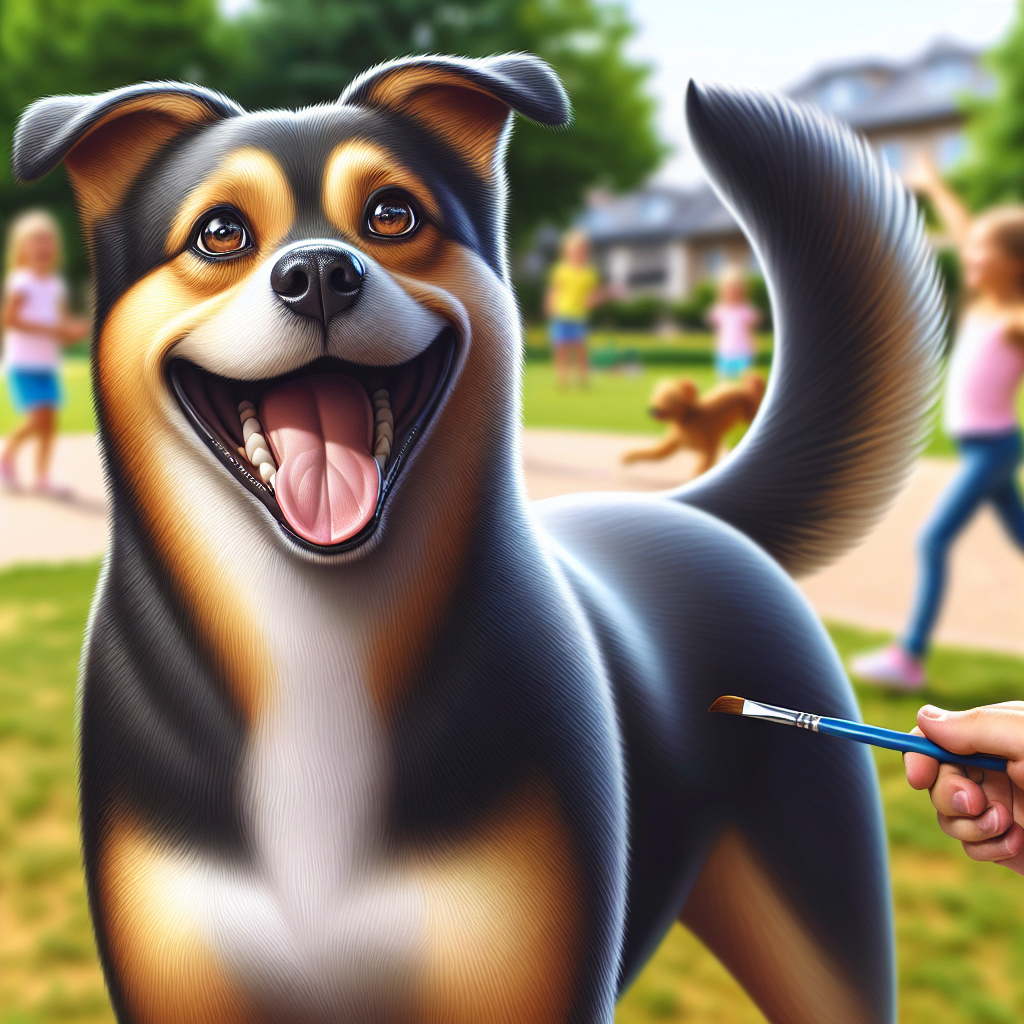Introduction: The Flea Dilemma

So, you’ve got fleas. Welcome to the club—one nobody wants to join. You’d think these tiny bloodsuckers would have the decency to pack their bags and leave, but no. They set up camp. It starts with a scratch here, a bite there. Next thing you know, you’re Googling how to get rid of fleas in the house. How did they even get in? Your pet? The backyard? Maybe they just materialized out of thin air. It doesn’t matter. They’re here. You’re here. Let’s get them out.
Fleas are relentless. They multiply like it’s a hobby. One minute, it’s a couple of them hopping around, and before you know it, you’re dealing with a full-blown flea infestation. Solutions exist, but they require effort and grit. You might be thinking, “How hard can it be?” Well, buckle up. It’s a ride.
The Daily Grind: Vacuuming Your Way to Victory
Alright, let’s get serious. Vacuuming. It sounds mundane, but it’s your first line of defense. Vacuuming for flea control is like going to the gym—no one really wants to do it, but it’s necessary. Those little buggers love your carpets, your furniture, your life. They don’t pay rent, yet they’re all over the place.
Now, get this—vacuum every day. Yeah, you heard me. Daily. It’s tedious, sure, but it’s effective. You’ll need a vacuum with strong suction—one that can suck the soul out of a rug. Hit every nook and cranny. Under the couch, behind the curtains. Go nuts. The satisfaction of hearing those little pests get whooshed away is unmatched. You’re not just cleaning; you’re waging war.
Soap and Water: A Flea’s Worst Enemy
Time to get crafty. Enter the homemade flea trap with soapy water. A simple trick, yet brutally effective. Fleas are drawn to light like moths. Place a dish of soapy water under a lamp. Those pests jump towards the light and—splash—into their watery grave. It’s not just a trap; it’s a flea execution.
This method’s got charm. You’ll feel like a mad scientist setting up your flea demise contraption. It’s cheap—just a few bucks for soap and water. The best part? Watching those fleas meet their end, one by one. It’s oddly satisfying.
Diatomaceous Earth: The Secret Weapon
Now for the secret weapon—diatomaceous earth for fleas. It’s a mouthful, sure, but this stuff packs a punch. It’s natural too—no chemicals. Sprinkle it around like you’re seasoning a steak. Carpets, pet beds, the whole shebang. Fleas hate it. It’s like walking on broken glass for them.
Diatomaceous earth is a game changer. Just make sure it’s food grade. You don’t need to go overboard—though it might be tempting. Use it sparingly. Once applied, vacuum it up after a couple of days. You’ll see a difference. It’s almost magical, but in a gritty, dust-everywhere sort of way.
Treating Pets: All Hands on Deck
Now, let’s talk pets. They’re your best pals, but right now, they’re flea magnets. Flea treatment for pets is all hands on deck. You’ve got options—baths, collars, pills. It’s like a flea-fighting buffet. Pick your poison, or maybe I should say, their poison.
Treat them regularly. Fleas reproduce faster than you can say “infestation.” You don’t want to skip a dose and have them bounce back. Natural flea remedies are out there too—like essential oils. Just check they’re safe for your pet. You don’t want to trade one problem for another.
And hey, while you’re at it, give them some extra love. They didn’t ask for this. They’re scratching and biting, but they’re still here wagging their tails or purring away. You’re in this together. Fleas are the enemy, and you’re a team.
So there it is—your battle plan. It’s not glamorous, but it’s real. Getting rid of fleas in the home is a journey. It takes time, patience, maybe a little sanity, but you’ve got this. Thanks for sticking around. You’re doing great. Keep at it, and soon enough, you’ll be flea-free. Cheers to that.
The Power of Vacuuming: Suck ‘Em Up
Alright, folks, let’s roll up our sleeves and jump in. Imagine, if you will, the humble vacuum—your new best friend in this flea-busting quest. It’s more than just a dust-bunny buster; it’s your secret weapon against the flea apocalypse. You know, if you’re anything like me, there’s some satisfaction in watching those tiny pests disappear into the abyss of the vacuum bag. It’s almost like therapy—cheaper than a session, that’s for sure. Vacuuming fleas from carpets is not just a task, it’s a ritual. You want to get every nook and cranny, right? Those little buggers love to hide where they think you won’t look. Under the couch, behind the curtains, even in the carpet’s deep fibers.
Now, let’s talk timing. You gotta make this a routine—like brushing your teeth, but for the carpets. Aim for every other day if you can swing it. Got pets? Double down. Every day might be your new normal. But hey, it’s worth it. The key here is consistency. Fleas breed faster than rabbits—blink, and you’ve got a whole new generation. Don’t give them the chance.
And while we’re at it, don’t skimp on the vacuum bag or canister. Empty it out after each session, and take it straight to the trash. None of this leaving it in the corner for later nonsense. You want those fleas gone, not lounging around in a vacuum bag penthouse. It’s a simple step, but it makes a world of difference.
Steaming Mad: Heat Your Way to a Flea-Free Home
Next up, we have the steam cleaner. If you don’t have one, maybe you could borrow from a neighbor or pick one up on sale. Fleas can’t stand the heat—literally. Steam those carpets and upholstery like you’re the conductor of a flea-eviction orchestra. The beauty of using steam cleaners for flea removal is that you’re not just blasting them with heat—you’re giving them a one-way ticket out of your life. Those high temperatures don’t just irritate fleas, they annihilate them.
Picture this: you, steam cleaner in hand, taking charge like a boss. It’s almost poetic. The steam rises, the fleas scatter—if they could run, they would. And while they’re busy being evicted, you’re left with a clean, fresh home. No creepy crawlies. No itch-inducing invaders. Just you, your steam cleaner, and a cup of coffee to celebrate.
But remember, this isn’t a one-time gig. Fleas are resilient little things. You’ll want to steam at least once a week if you can manage it. More if you’ve got a serious infestation. And be thorough. Carpets, furniture, pet beds—anything they could be hiding in. It’s a job well done when you can sit back and know you’ve given those fleas the boot.
Natural Remedies: Mother Nature’s Flea Fighters
Now, let’s talk about natural remedies. Mother Nature’s got your back with a host of options like diatomaceous earth or essential oils. These aren’t just for hippies—they’re legit. But remember, always check what’s safe for your pets before you go sprinkling anything around. Diatomaceous earth, for instance, is a fine powder that can be sprinkled across carpets and floors. It’s like laying down a welcome mat of doom for fleas. They walk on it, and bam—game over.
Essential oils are another story. Some folks swear by them, and who am I to argue? Lavender, peppermint, eucalyptus—these are your allies. Mix them into a homemade flea spray or dab them around entry points. They smell pretty good too; it’s like turning your flea fight into a spa day.
Of course, there are always those oddball remedies people swear by. You know the ones—vinegar, lemon juice, even salt. And who am I to judge? If it works, it works. Just be sure your pets are cool with whatever you’re using. Safety first, my friends.
Laundry Day: Wash Away Fleas
Turning to laundry—it’s not just a chore anymore. It’s a flea-fighting mission. Hot water and a long spin cycle can work wonders on bedding and pet blankets. Fleas don’t stand a chance against a good old-fashioned laundry day. Think of it as decluttering for your pets.
You’ll want to wash everything: pet beds, blankets, even those cute little sweaters you dress them in. And do it often. Like, once a week often. Hot water is your friend here—heat kills fleas, remember? And don’t forget the dryer. High heat is the final nail in the coffin, so to speak.
Pro tip: add a bit of vinegar to the rinse cycle. It’s a natural flea deterrent, and it helps keep things fresh. Plus, it’s cheap—can’t beat that.
Flea Control for Pets: A Happy, Itch-Free Pal
Last but not least, let’s not forget about our furry friends. They’ve been scratching their way through this ordeal. A trip to the vet or a chat with your local pet store expert can yield some solid advice on the best treatments for your four-legged companions. Flea treatments for dogs and cats are more varied than you might think. You’ve got pills, collars, topical treatments—an arsenal of options.
And here’s the thing: not every treatment works for every pet. It’s like trying to find the perfect pair of shoes. Sure, it might take a few tries, but when you find it, it’s magic. So, don’t be afraid to experiment (safely, of course).
Also, keep an eye on their bedding. Washing pet bedding for fleas is an absolute must. And while you’re at it, check for any signs of irritation. Redness, hair loss—these are your clues. If you spot any, it might be time to switch up the treatment.
Thanks for reading, and good luck in your flea-fighting endeavors! Remember, you’re not alone in this. We’ve all been there, and with a bit of elbow grease—and maybe some help from the neighbors—you’ll get through it. Cheers!
Natural Flea Repellents You Can Trust
So, here we are, fighting fleas. They’re like those annoying guests who never leave. You want them gone, but don’t wanna use stuff that smells like a chemistry set. Enter natural flea remedies for home. Ever tried a lemon spray? It’s not just for fish and chips. Fleas hate the stuff. You just slice up a lemon, boil it, and let it sit overnight. Then spritz away. It’s simple, smells nice, and keeps those jumpy little critters at bay.
Then there’s the trusty trio: vinegar, salt, and baking soda. They work like a charm. Mix vinegar with water and spray your carpets—fleas hate it. Sprinkle salt and baking soda on your carpet, let it sit for a day, and vacuum it up. You’ll be surprised at how effective this is. Plus, it doesn’t cost an arm and a leg. Just a little elbow grease and you’re on your way to a flea-free zone.
The Art of Cleaning: A Flea-Free Home
Cleaning to prevent fleas is like doing a workout. You don’t always want to do it, but you know you have to. Fleas love dirt and dust like a kid loves candy. So, grab that vacuum and get to work. Focus on carpets and upholstery. Those are prime real estate for fleas.
Wash your pet’s bedding often. It’s not glamorous, but it’s necessary. Hot water can be a flea’s worst nightmare. And don’t forget about the floors. Mop them regularly, especially if you have hardwood or tile. Fleas can hide in the cracks. When you’re done, you’ll feel like you’ve conquered a mountain—only this one’s made of dust and dander.
Battling Fleas in the Yard
Now, let’s step outside. Your yard—it’s a flea’s playground. But you’re not gonna let them have all the fun. Yard flea treatment options are essential. Mow the lawn. Keep the grass short. Fleas love tall grass. It’s like a jungle gym for them. Without it, they’re homeless—simple as that.
Try diatomaceous earth. It’s a bit of a tongue twister, but it’s your friend. This powdery stuff is all-natural and tears fleas apart—literally. Sprinkle it around where your pets like to hang out. It’s safe for them but not for fleas. And don’t forget to check the damp, shady spots. Fleas love those areas. Watering your lawn less can help, too. Dry ground means fewer fleas.
Professional Help: When To Call In The Big Guns
Sometimes, no matter what you do, those fleas just won’t quit. That’s when you call in the pros—professional flea extermination services. They’re like the cavalry coming over the hill. Pest control services for fleas have the tools and know-how to get the job done.
But when should you call them? Well, if you’re seeing more fleas than you can count or if your pet’s scratching like there’s no tomorrow, it might be time. It’s not cheap, but sometimes you gotta pay for peace of mind. And let’s face it, having someone else handle the dirty work can be a relief.
Keep Those Fleas From Coming Back
Finally, let’s talk prevention. You don’t want to go through all this again, right? Flea prevention tips for home are your new best friend. Keep your yard clean, vacuum often, and wash your pet’s bedding regularly. It’s all about consistency.
Use flea treatments on your pets. There are plenty on the market—find one that works for you and stick with it. And always keep an eye out. Fleas are sneaky. They can hitch a ride on your pets or even on you. So, stay vigilant.
The best ways to keep fleas out of your home are simple, really. It’s about making your home less appealing to these unwelcome guests. And remember, you’re not alone in this fight. Millions are battling fleas, just like you. So, take a deep breath, roll up your sleeves, and get to work. You’ve got this. Thanks for sticking around. You’re doing great.
Quick Takeaways:
Alright, folks, let’s dive into this flea fiasco. You want to know how to kill fleas in home? First up, grab that vacuum and go to town. We’re talking about vacuuming fleas from carpets like your life depends on it. Those little jumpers don’t stand a chance against your vacuum cleaner’s mighty suction. And don’t forget the nooks and crannies—those fleas love hiding like the freeloaders they are. Next, consider using steam cleaners for flea removal. Fleas hate the heat, and a good steam cleaning can send them packing.
But hey, if you’re more of a DIY enthusiast, there’s a homemade flea trap with soapy water calling your name. It’s like setting a tiny, bubbly minefield for those pests. And don’t overlook the power of diatomaceous earth for fleas. Sprinkle it around, and watch the little critters dry up like yesterday’s news.
On the furry front, remember flea treatment for pets. Your pets didn’t ask for this itch-fest. A chat with your vet or a quick trip to the pet store can save your dog or cat from the scratching madness. Next thing you know, you’ll be washing pet bedding for fleas—because nothing says, “I love you, Fido,” like a clean bed.
So, gather your arsenal of flea-fighting tools and get to work. You got this.
FAQs:
1.
How to kill fleas in home without harsh chemicals?
Natural flea remedies for homes are your best friend here. You can try diatomaceous earth, which is a natural powder that dehydrates fleas. Essential oils like lavender or lemon can also help, but make sure they’re safe for your pets first. Another option is a homemade flea spray using vinegar and water.
2.
How effective is vacuuming for flea control?
Vacuuming fleas from carpets is not just effective—it’s essential. Regular vacuuming can remove flea eggs, larvae, and adults, preventing them from multiplying. Make sure to empty the vacuum bag outside to keep those pests from staging a comeback.
3.
Can I rely on a homemade flea trap with soapy water?
Yes, but it’s more of a supplementary method. A homemade flea trap with soapy water can catch adult fleas, but it won’t tackle eggs or larvae. Place it in areas where you suspect flea activity and use it in conjunction with other methods.
4.
What flea treatment for pets should I consider?
Flea treatments for dogs and cats come in many forms—shampoos, collars, and topical treatments. Consult your vet to find the best option for your pet’s needs. And remember, not all treatments are interchangeable between dogs and cats.
5.
How does using steam cleaners for flea removal work?
Steam cleaners use heat to kill fleas on contact. They penetrate deep into carpets and upholstery, reaching areas that vacuums might miss. Just make sure the surfaces can withstand the heat. It’s like a sauna for your carpets, minus the relaxation.
Conclusion:
So, you’ve been through the flea ringer and want to know how to kill fleas in home once and for all. It’s a battle—no doubt about it. But armed with a vacuum, a steam cleaner, and maybe a bit of diatomaceous earth, you’re not going in unarmed. Sure, it takes effort, but picture this: a flea-free zone where you and your pets can relax without the itch-fest.
Remember, it’s not just about killing fleas. It’s about creating a hostile environment for them—one where they wouldn’t dare return. Between vacuuming, steam cleaning, and maybe setting up a homemade flea trap with soapy water, you’re turning your home into a fortress.
And don’t forget your furry allies. Give them the best flea treatment for pets, because they deserve some relief too.
Here’s to a flea-free existence. Thanks for sticking around, and good luck on your flea-fighting journey. You’ve got the tools, and now you’ve got the know-how. Go get ’em!
References:
1. [Environmental Protection Agency – Controlling Fleas and Ticks Around Your Home](https://www.epa.gov/pets/controlling-fleas-and-ticks-around-your-home)
2. [Healthline – How to Get Rid of Fleas](https://www.healthline.com/health/healthy-home-guide/how-to-get-rid-of-fleas)
3. [WebMD – Natural Remedies for Fleas](https://www.webmd.com/pets/ss/slideshow-fleas-natural-remedies)
4. [Harvard Health – Protecting Your Home and Pets from Fleas](https://www.health.harvard.edu/staying-healthy/how-to-get-rid-of-fleas-protecting-your-home-and-pets)
Our solution eradicates fleas on contact without harmful chemicals, ensuring a safe environment for your pets and family. Easy to use and highly effective, SayByeBugs helps you maintain a flea-free home. Learn more and order today at SayByeBugs.com
Our solution eradicates fleas on contact without harmful chemicals, ensuring a safe environment for your pets and family. Easy to use and highly effective, SayByeBugs helps you maintain a flea-free home. Learn more and order today at SayByeBugs.com








